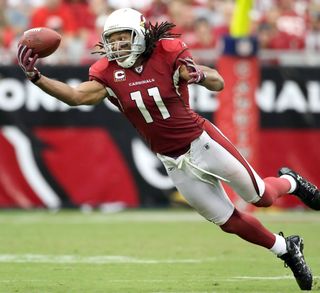Panel: Watercooler TV, Now Twitter, Facebook TV

Television fans that used to gather around the office watercooler to talk about the previous night’s shows are now tweeting and messaging friends during live broadcasts, a shift that has programmers, advertisers and content developers looking for new ways to present content, panelists at the Business of Live Television Summit said.
But where once TV viewers used to gather together for big events, whether it be the Super Bowl or the finale of The Sopranos, they are siting at home and interacting with friends and strangers via social media like Twitter and Facebook.
“That ability to capture people interacting with their social group while watching is a powerful way to reach consumers,” said Horizon Media senior vice president and director of national broadcast Dave Campanelli at the Multichannel News/B&C-sponsored event in New York City Tuesday.
That level of engagement is not lost on those that measure viewership. Nielsen vice president of analytics Peter Katsingris noted that sporting events account for only 2% of all telecasts during a year, but more than 50% of the TV tweets generated are during sporting events.
“We know that everyone is connected when watching TV,” Katsingris said.
While Twitter’s impact on television viewership is well known to anyone who has heard of Sharknado, Facebook is becoming a force in driving viewership to live events as well. According to Facebook manager of public solutions Bob Morgan, live events like the Academy Awards, The MTV Video Music Awards and the FIFA World Cup not only attract the biggest audiences, they also drive the most social media traffic. Morgan estimated that unique engagements to the platform were about 11 million during his year’s Oscars, 13 million for the VMAs and 350 million for the World Cup. He added that the FIFA World Cup audience during the tournament also generated about 3 billion likes and shares.
Facebook, he said, is starting to investigate ways to bring TV networks, shows and personalities into the fold, with products like a mentions app, which allows verifiable public figures to engage in discussions about them or their shows. So in a Facebook thread after a National Football League game when users are talking about Arizona Cardinals wide receiver Larry Fitzgerald’s future with the team, Fitzgerald himself can chime in.
Multichannel Newsletter
The smarter way to stay on top of the multichannel video marketplace. Sign up below.
That level of engagement can help drive viewership to shows, even replacing traditional ads that promote programs before they air, said Anthem Media Group CEO Leonard Asper.
“If somebody says they are going to be on a show [via facebook or Twitter], that is something that people are going to tune into,” Asper said. He added that while live sports programming is a huge driver of engagement, networks and programmers also can gain audiences through shoulder programming or content associated with those live events.
Asper pointed to his own Fight Network, which may offer a marathon of past Manny Pacquiao fights prior to one of the boxer’s pay-per-view events.
Asper added that partnering with athletes and leagues to help drive the social discussion, especially with fantasy sports leagues. Asper’s company also owns The Fantasy Sports Network.
Fantasy Sports has built a series of partnerships with players and organizations like the NFL Hall of Fame, where athletes will weigh in themselves about injuries and the like.
“Why do people watch the Cleveland Browns vs. the Buffalo Bills? Because they have fantasy players in that game,” Asper said. He added that the gambling aspect of fantasy leagues and sports in general also drives intense engagement.
“The betting side of it is a massive side that is going to keep driving live sports,” Asper said. “People in the UK are watching tennis matches and betting on whether Roger Federer is going to double fault.”
